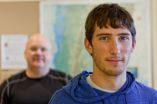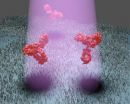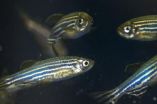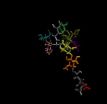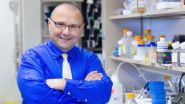(Press-News.org) Here's your northern Vermont forecast for the rest of this century: annual precipitation will increase by between a third and half an inch per decade, while average temperatures will rise some five degrees Fahrenheit by midcentury. By late in the century, average temperatures will have spiked more than eight degrees. In July, by 2100, the City of Burlington will have at least ten additional days above ninety degrees. The growing season picks up 43 more days. Looking at ski conditions, expect annual snowfall at six major ski resorts to decline about fifty percent by century's end.
And these are just a few of the estimates by a team of University of Vermont and other scientists in a new research study, "Impacts of Projected Climate Change over the Lake Champlain Basin in Vermont," published in the current issue of the Journal of Applied Meteorology and Climatology.
A tidal wave of historical data, current observations, and computer models makes it clear that the earth's climate is getting hotter, and dangerously so. But one of the fundamental challenges of climate change forecasting is how to bridge the gap between global-scale models and local impacts.
"Our new study helps close this gap," says Justin Guilbert, the lead author on the new study and a doctoral student in the University of Vermont's College of Engineering and Mathematical Sciences. In one of the first such studies of its kind, he and his colleagues took four climate projections — that had been downscaled from global-scale "general circulation models," or GCMs — to look at likely climate change in northern Vermont and southern Quebec in greater detail.
This new study "gives us regionally downscaled climate change information that was not previous available," notes Gillian Galford, a University of Vermont climate scientist not involved in the new study and who leads the Vermont Climate Assessment project. "It is an advancement in climate modeling that has been needed by the state to build resilience economically, socially and environmentally in the face of climate change."
Using two scenarios of possible greenhouse-gas concentrations in the future — a "high" and a "moderate" trajectory of C02 levels (called "RCP 4.5" and "RCP 8.5" to climate change wonks) — the team of scientists calculated a range of probable outcomes for the Lake Champlain Basin over the next 85 years. They then combined these projections with historical data on temperature and precipitation from weather stations over the period from 1961 to 2000 to assess Vermont's future climate.
"The strength of our study is that we used a much finer resolution grid — approximately 13 kilometers on side — instead of hundreds of kilometers, as you see in the GCMs, where all of Vermont fits in one or two boxes," notes UVM professor Brian Beckage who helped lead the new study. "This finer scale will capture more of the heterogeneity in the climate and landscape — and yields a more accurate local forecast," he says.
For example, the new study suggests that the number of days suitable for making maple syrup will decrease, and coarser global models might lead one to think that this would be a uniform problem across the state — or even that sugar maples themselves may be pushed out. "But if you look with this much finer resolution, you will see that there will be areas where the temperature will remain well within the range for sugar maple, at higher elevations and in these coves. It's more likely that its distribution will change. With a finer-scale model, we'll have a less dramatic headline, and a more accurate forecast," Beckage says.
"We wanted planners, the general public, and others to get a feeling for changes that they are likely to care about," Guilbert says. These include a rising heat index — "values in July for late in the century will make the average day feel approximately 13° Fahrenheit warmer," the scientists write. They also forecast more extreme temperature and precipitation events, increased chances for flooding, but also rising aridity during the growing season and increased number of short droughts.
The new study follows in the wake of the release of the National Climate Assessment at the White House in May, and the Vermont Climate Assessment, released by UVM's Gund Institute for Ecological Economics, in June.
The new study is the "type of work that is useful and meaningful to planners, policy makers and citizens," UVM's Gillian Galford notes, "These findings are consistent with the trends outlined by the Vermont Climate Assessment and go further — the authors provide quantitative details, such as a precipitation increase" of a third to a half an inch per decade. "These specifics were not previously available from existing tools and represent significant progress in understanding the local outcomes from global climate change."
Northern Vermont and the Lake Champlain Basin experience very different climates than Vermont's southern and northeastern region, Galford said, and "the state could use comprehensive analysis of climate change patterns across the state as these researchers continue to refine and expand their models."
The conditions in the Lake Champlain region are forecast to — probably — get wetter and "this increased flow could overwhelm current infrastructure including bridges and culverts as well as increase nutrient loading to Lake Champlain through overland flow and stream bank erosion," the team writes. But there is enough uncertainty in the precipitation modeling, that, in fact, conditions could be drier by the end of the century, or patterns of rain and drought could be different than today.
"Things are obviously changing, but the climate system is complex. We'll never know exactly how it's going to respond," notes Beckage, an expert on ecological modeling and statistics. But getting closer, reducing error bars, clarifying what is and isn't "well-bounded," as the scientists say, is one of the great and urgent science challenges of the age.
"We're more confident about temperature," Beckage says, "precipitation is much harder to get right." And for policymakers, as well as scientists, knowing what is unknown — and levels of uncertainty — may prove as important as what is known.
Even the specifics of temperature are fuzzy. "It's going to get warmer, but it might get a lot warmer or it might just get a little bit warmer," Beckage says. He points at a graph in the new study labeled "temperature delta" where monthly temperature changes range from about a two-degree Fahrenheit rise to an alarming eleven-degree rise that might be in store over the next century. "That's huge uncertainty," he says.
But what makes the "known unknowns," in the inimitable words of Donald Rumsfeld, even more complicated is that scientific knowledge always, inescapably, lives in a social context. And no social context around science is more complex and fraught than the one around climate change.
Uncertainty, unfortunately, often leads to public confusion and feeds the fires of the climate-change skeptic community. A growing body of social science research makes clear that among people who are already skeptical about climate change, greater scientific information and literacy makes them more skeptical of the reality of climate change.
"The climate change skeptics like to focus on uncertainty and say, 'we should do nothing because it's so uncertain.' The other side is really worried, and wants to save the world, so they discount the uncertainty," Beckage says. "The most interesting and complex part of climate change science has become the social dynamic."
"Whether climate is changing and how much it will change is not like an electoral process that is determined by people's beliefs. Nature is going to behave the way nature is going to behave." Beckage says. "But the climate is a coupled human and natural system and we have a hand in what will happen next."
INFORMATION:
This new study is part of a larger National Science Foundation-funded research effort at UVM — Research on Adaptation to Climate Change, or RACC — that aims to better understand the complex interactions between climate change and land use, and human communities and their choices.
The study was conducted and written by Justin Guilbert, University of Vermont College of Engineering and Mathematical Sciences; Brian Beckage, University of Vermont Department of Plant Biology; Jonathan Winter, Dartmouth College; Radley Horton, NASA Goddard Institute for Space Studies; Timothy Perkins, University of Vermont Department of Plant Biology; and Arne Bomblies, University of Vermont College of Engineering and Mathematical Sciences.
Getting hot and wet in Vermont
First-of-its-kind forecast for Lake Champlain region paints worrisome picture
2014-09-15
ELSE PRESS RELEASES FROM THIS DATE:
Mayo finds many liver transplant patients can avoid costly stay in ICU after surgery
2014-09-15
JACKSONVILLE, Fla., Sept. 12, 2014 — The liver transplant team at Mayo Clinic in Florida has found, based on 12 years of experience, that more than half of patients receiving a new liver can be "fast-tracked" to return to a surgical ward room following their transplant, bypassing a one- or two-day stay in the Intensive Care Unit (ICU).
In the September issue of the American Journal of Transplantation, the physicians and researchers have turned their knowledge of who can be safely fast-tracked into a scoring system that other transplant centers can also use — thus sparing ...
The shadow of a disease
2014-09-15
This news release is available in German.
In future, some diseases might be diagnosed earlier and treated more effectively. Researchers at the Max Planck Institute for the Science of Light in Erlangen have developed an optical method that makes individual proteins, such as the proteins characteristic of some cancers, visible. Other methods that achieve this only work if the target biomolecules have first been labelled with fluorescent tags; In general, however, that approach is difficult or even impossible. By contrast, with their method, coined iSCAT, the researchers ...
Unemployment for doctoral scientists and engineers below national average in 2013
2014-09-15
A new National Science Foundation (NSF) report says the 2013 unemployment rate for individuals with research doctoral degrees in science, engineering and health (SEH) fields was one-third the rate for the general population aged 25 and older--2.1 percent versus 6.3 percent.
According to the report, an estimated 837,900 individuals in the United States held SEH research doctoral degrees in 2013, and nearly 735,900 of them were in the labor force; this includes those employed full time or part time and unemployed individuals actively seeking work.
Statistics show that ...
USC researchers discover the healing power of 'rib-tickling'
2014-09-15
Unlike salamanders, mammals can't regenerate lost limbs, but they can repair large sections of their ribs.
In a new study in the Journal of Bone and Mineral Research, a team directed by USC Stem Cell researcher Francesca Mariani takes a closer look at rib regeneration in both humans and mice.
The first author of the paper, USC medical student Marissa K. Srour, was a USC undergraduate when she started the project, which earned a 2011 USC Discovery Scholar Prize. Each year, 10 graduating seniors win these coveted prizes, which recognize exceptional new scholarship.
Using ...
Zebrafish model of a learning and memory disorder shows better treatment
2014-09-15
PHILADELPHIA — Using a zebrafish model of a human genetic disease called neurofibromatosis (NF1), a team from the Perelman School of Medicine at the University of Pennsylvania has found that the learning and memory components of the disorder are distinct features that will likely need different treatment approaches. They published their results this month in Cell Reports.
NF1 is one of the most common inherited neurological disorders, affecting about one in 3,000 people. It is characterized by tumors, attention deficits, and learning problems. Most people with NF1 have ...
Advancing the science for health programming in crisis conditions
2014-09-15
September 12, 2014 -- Humanitarian crises are becoming increasingly complex and a growing threat to the health and safety of populations. An improved evidence-base to guide interventions in the countries most vulnerable to these conditions is more critical than ever. A paper by researchers at Columbia University's Mailman School of Public Health published online in the journal Science, looks at the challenges of doing research in such settings and the strategies that must be adopted for scientific advance.
"The circumstances of humanitarian crises present many barriers ...
Decoding 'sweet codes' that determine protein fates
2014-09-15
VIDEO:
Here are movies of dynamic behavior of a sugar chain on the basis of NMR-validated simulations. This chain has a particular sugar (green circle).
Click here for more information.
We often experience difficulties in identifying the accurate shape of dynamic and fluctuating objects. This is especially the case in the nanoscale world of biomolecules. The research group lead by Professor Koichi Kato of the Institute for Molecular Science, National Institutes of Natural Sciences ...
You don't walk alone
2014-09-15
65 million people around the world today suffer from epilepsy, a condition of the brain that may trigger an uncontrollable seizure at any time, often for no known reason. A seizure is a disruption of the electrical communication between neurons, and someone is said to have epilepsy if they experience two or more unprovoked seizures separated by at least 24 hours.
Epilepsy is the most common chronic disease in pediatric neurology, with about 0.5% of children developing epilepsy during their lifetime. A further 30% of epileptic children develop refractory ...
Walking or cycling to work improves wellbeing, University of East Anglia researchers find
2014-09-15
Walking or cycling to work is better for people's mental health than driving to work, according to new research by health economists at the University of East Anglia and the Centre for Diet and Activity Research (CEDAR).
A report published today reveals that people who stopped driving and started walking or cycling to work benefited from improved wellbeing. In particular, active commuters felt better able to concentrate and were less under strain than if they travelled by car.
These benefits come on top of the physical health benefits of walking and cycling that are ...
Nature: New drug blocks gene driving cancer growth
2014-09-15
When active, the protein called Ral can drive tumor growth and metastasis in several human cancers including pancreatic, prostate, lung, colon and bladder. Unfortunately, drugs that block its activity are not available. A study published today in the journal Nature uses a novel approach to target the activation of these Ral proteins: "When you want to keep an alligator from biting you, you can tie its mouth shut. We took another approach – we put a stick in its mouth to hold it open," says Dan Theodorescu, MD, PhD, professor of Urology and Pharmacology, director of the ...
LAST 30 PRESS RELEASES:
New fossil study illuminates on the evolutionary success of frogs
Patient-specific human liver model to understand disease mechanisms
Confused by the doctor's questionnaire? U of A study suggests it's common
How do brains stay stable, and when might a dose of flexibility be helpful?
mRNA revitalizes aging immune systems—the liver as a fountain of youth
Rural-urban differences in the prevalence of chronic pain among adult cancer survivors
Food insecurity, burnout, and social isolation among resident and fellow physicians
How do spinal cord injuries heal?
Detailed cell map unlocks secrets of how reproductive organs form
Large language models unleash AI’s potential for autonomous and explainable materials discovery
Gut bacteria have evolved rapidly to digest starches in ultra-processed foods
New risk score helps predict pancreatic cancer recurrence
New evidence challenges understanding of Parkinson’s disease
A new study reveals how embryos and the uterus “talk” during implantation
Cedars-Sinai reports heart attacks, general illness spiked after LA fires
PolyU develops ultra-stable, mucus-inspired hydrogel to boost gastrointestinal wound healing
Flour choice shapes sourdough microbial communities
Can a retinal implant reverse macular degeneration?
Feeding fungi plant remnants produces tasty protein to fortify vegan, vegetarian diets
New tech reduces false positives from breast ultrasounds
Drone-mounted lab monitors fertilizer runoff in real time
Short, light-intensity exercise boosts executive function and elevates mood in children
Jeonbuk National University researchers reveal new interface engineering strategy for efficient and stable back-contact solar cells
Tyrosinase drives hydroquinone-induced exogenous ochronosis: not HGD inhibition
UMass Amherst chemists develop unique tool for studying RNA
Disappointment alters brain chemistry and behavior
A built-in odometer: new study reveals how the brain measures distance
Stress-related brain signals drive risk of cardiovascular disease in people with depression and anxiety
New details on role of fat transport molecules in Alzheimer’s onset
Study illuminates how an antiviral defense mechanism may lead to Alzheimer’s disease
[Press-News.org] Getting hot and wet in VermontFirst-of-its-kind forecast for Lake Champlain region paints worrisome picture
